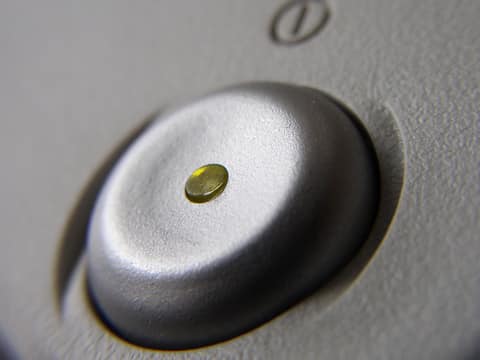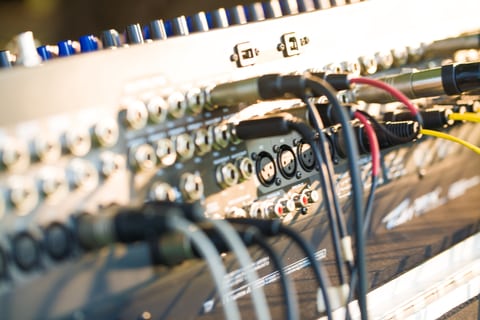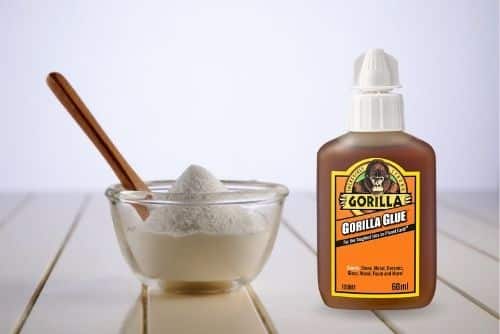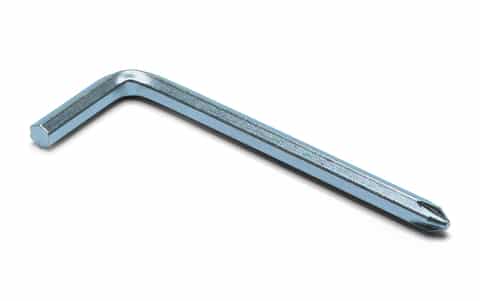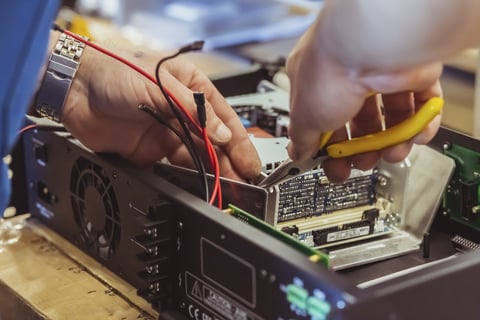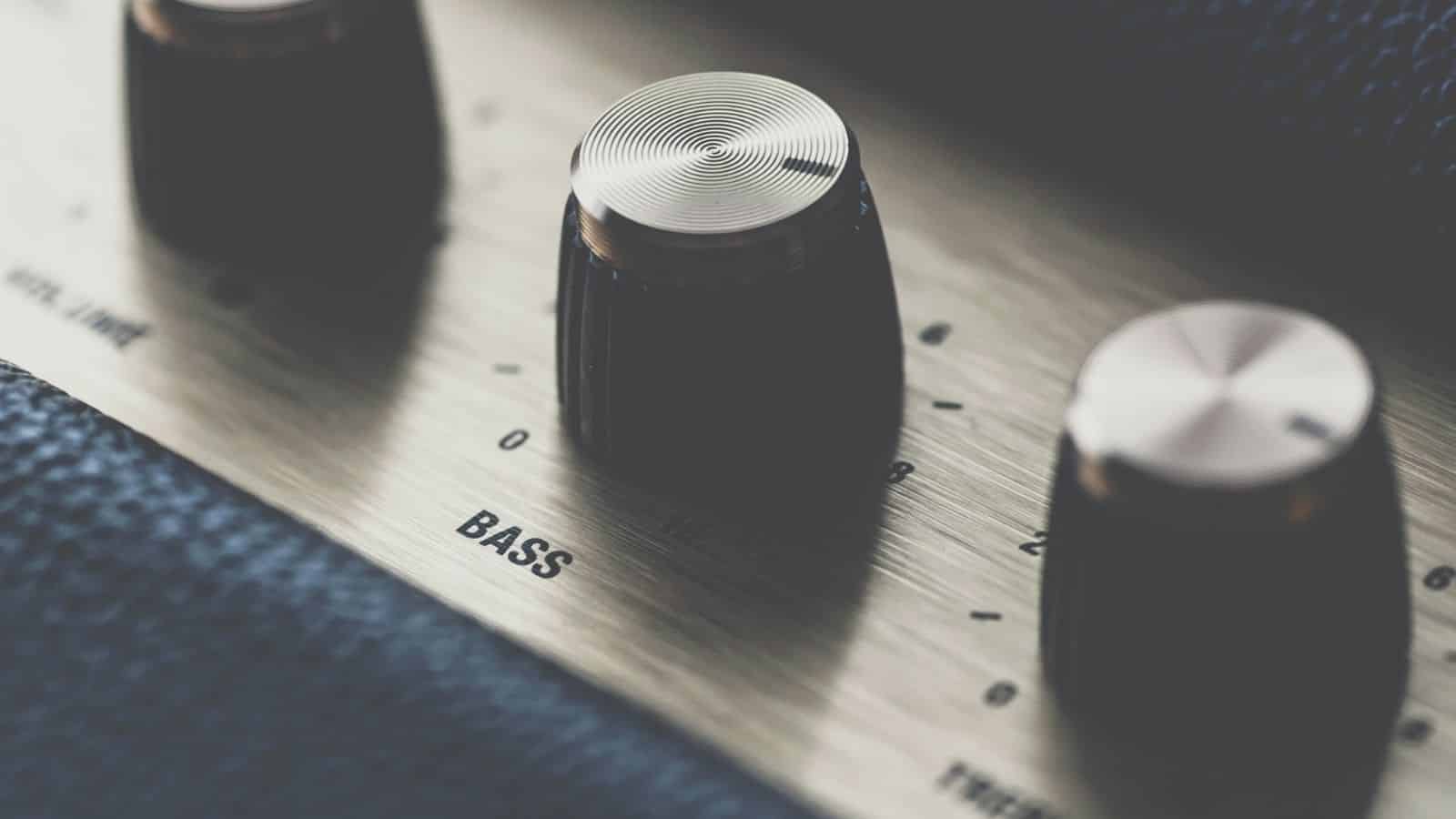
There are certain different components that play a key role in how your instruments sound and give you the ability to make adjustments on the fly.
The bass knob on your guitars, amps or musical instruments is one of those components as it triggers the signal for the bass to the speakers.
Your bass is simply a lower section of the audio spectrum that runs a mixed level of frequencies. The bass knob has the job of controlling these frequencies. You might have come across the knob on a subwoofer. It is responsible for keeping a check on the gain on the signal as it enters the amp.
The bass knob remains a crucial factor, especially if you are dealing with EDM. It is present on the amp that controls the amount of bass that has to be then used on the speakers to create the right tunes of music.
But there is a high chance of the bass knob showing signs of wear with time. Whenever you try to adjust the sounds, it will make a noise.
That is why you need to be careful about the bass knob and make sure that it is working at all times. There are some troubleshooting tips that can help you get your bass knob fixed without any requirement of heavy tools or expertise. If fixed appropriately, you can get it going for years.
How to Fix Bass Knob Not Working?
1. Clean It Up
It has been observed that most of the time, bass knobs fall prey to corrosion, and their ridges are filled with bluish-green stuff. People might mistake it for mold, but that’s not it. It’s copper rust. You can remove it with a bass cleaner and polish.
Dust particles are another factor that can prevent the bass knob from working. They can stick on the knob and also inside it. You can find multiple ways to clean the knob.
One of the simplest solutions is to use a cleaner to clean the knob. Make sure that the cleaner you use doesn’t cause any damage to the knob.
First of all, get a hold on some things, including CTC, additional rubbing spirit, clean cloth, and tissue. Pour the CTC or any other rubbing spirit on the tissue and apply it to the knob gently.
Now carry out thorough cleaning. Now, use a clean cloth to wipe the leftovers. This is an easy solution that not only solves your problem at the moment but also keeps you from such issues in the future.
You have to keep a regular check on your instruments because moisture and dust particles are everywhere, and they can easily contaminate your bass knobs. It is recommended to cover the instruments with some cloth or sheet even if you keep them in the cupboard.
2. Assess The Bass Knob Yourself
You need to check the ground connections of the knob to ensure that nothing is broken. If you see any trouble with the connections, reheat them and see if it fixes your problem.
3. Reset
There is also a reset button on the amp, and you might need to use that in order to have this problem fixed. It goes without saying that the amp might have developed some software issue that can lead you to this problem with the knob.
The first step of this process is to locate the reset button on your amp. It’s an easily detectable small button. Keep it pressed for a minute or two until the amp is reset to its default settings and preferences.
This solution is risky because you can lose your data with a reset. But it will definitely get rid of any bug or software problem on your amp.
4. Check the cables
For these advanced amps, there is a separate cable for each component, such as treble, main volume, and voice. That could also be an issue, and your bass cable or the connector could be the main culprit here.
You need to make sure that you are checking on all the cables thoroughly. You can start this process by taking out the cable from the bass connector. Now clean it up, and then plug it back in tightly. This procedure can most likely solve your problem.
However, if the issue still persists, check some other cable on the bass component connector and see if the problem is with your cable or the component itself.
If the cable is faulty, a simple cable replacement is going to help you through the problem. However, if the cable is fine and it is working with some other component, get the amp checked by an expert technician. Sometimes a problematic amp is the root cause of all issues with the bass knob.
5. Apply A Mix Of Baking Soda And Gorilla Glue
Sometimes, you’ll notice the sliding of the bass knob carried out without turning the potentiometer. The major reason behind this problem is the inability of the groves under the knob to turn the potentiometer.
Let alone the turning part; they can’t even grab it anymore. The knob cannot be kept in place without the help of groves.
It is not a difficult fix. Take some baking soda and mix it with gorilla glue. Look for the groves under the knob. Apply the mix to the groves and then place it again on the potentiometer.
Wait for a little while, and you are good to go. As easy as this solution sounds, it does have the downside of making it difficult for the knob to be removed later on.
Sometimes the bass knob falls prey to serious damage, and its shaft gets broken. Even gluing fails to keep a hold on it. In that case, you might have to look for a replacement. No troubleshooting can fix a broken shaft of the knob.
If you are looking for ways to upgrade the looks of your guitar, you can get the whole kit of bass knobs. There is no such technique involved in replacing them. Anyone can do it.
However, the scenario is different for small knobs. They require the use of tools like an Allen wrench to get removed. Of all the knobs, metal knobs fit this situation.
There is a hex nut over the shield that is responsible for keeping the potentiometer in place. It can get worn out and lead to the turning of the potentiometer and the knob over the shaft. In order to deal with this situation, remove the knob and place it again in place by using a wrench.
In case you don’t catch a rusty hex nut on time, it has the potential to ruin the whole pot. Therefore, always keep its replacement with you beforehand. You can find these nuts anywhere. They are quite cheap. Their replacement process is not hard either.
If you see that the hex nut is doing its job fine by holding both the pieces together, it hints at the broken shaft. An adhesive like gorilla glue can fix it back in its place.
6. Tighten The Nut
As you take off the plastic knob, a nut will be visible to you. If it is loosely attached, you need to tighten it without affecting the whole pot. An ideal way to do so is to hold it from the inside of the guitar cavity. It will keep the whole pot from spinning.
7. Get it checked
There are a number of smaller components inside the amp that have the possibility of getting worse with time. Therefore, you must check on all of them to ensure a proper fit.
The best way is to get the amp diagnosed by some authorized technician who will be able to thoroughly look into the amp and any reasons that might be causing you to have this problem. Not only will they be able to diagnose the problem, but they will fix it as well with some repair or replacement if needed.
8. Find A Replacement
Sometimes the bass knobs turn so bad over time that it becomes a necessity to replace them with the new ones. They do not cost much in customizing your instrument.
An important thing to remember here is that the procedure and parts mentioned above can vary on the basis of the instrument’s model. So make sure that you follow the right guidelines in troubleshooting your bass knob.

